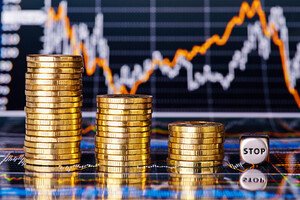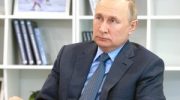The head of the US Federal Reserve System did not rule out another significant rate hike in September – if inflation rates do not slow down

The US Federal Reserve raised the key interest rate again on Wednesdayby 0.75 percentage point (75 basis points), seeking to contain the strongest surge in inflation since the 1980s. Federal Reserve Chairman Jerome Powell said another “unusually large” rate hike could be in order in September if inflationary pressures on the economy do not ease sufficiently by the fall.
Also read: Dollar to make another surge this week in relation to world currencies – Financial Times
“Inflation remains elevated, reflecting supply-demand imbalances related to the pandemic, rising food and energy prices, and broader price pressures,” said the decision of the Fed's Open Market Operations Committee, which today raised the key rate to range of 2.25% – 2.50%.
The committee said that the Fed, as before, is “very attentive” to inflationary risks. Jerome Powell reiterated this at a press conference following the publication of the Fed's rate hike decision, stressing the importance of reducing inflation.
According to Powell, the Fed recognizes the hardships inflation is creating for ordinary Americans, especially those with low incomes, and has promised that the Fed will not relax its efforts to fight inflation until there is convincing evidence that the rate of price growth has begun to decline.
Inflation has soared to a four-decade high this year and is more than triple the central bank's 2% target.
In early June, the US Federal Reserve sharply raised its benchmark rate from 0.25 to 0.75 p.p. This is the biggest increase since 1994.
Despite steady job growth, the Fed noted that “recent indicators of spending and output have moderated,” indicating that the aggressive rate hikes that began in March have begun to weigh on the economy. However, Powell said that the American economy continues to show resilience.
“I don't think the U.S. is in a recession right now,” he said, citing the unemployment rate, which is still at its lowest level in half a century, as well as solid wage growth and job growth.
< p>The White House today also disagreed with the fact that the United States has entered a recession or is in a “pre-crisis” state. At the same time, White House spokeswoman Karin Jean-Pierre refused to comment on the Fed's monetary policy at today's press briefing.
Starting in March, the Fed raised the key rate by 225 basis points this year. The base rate is currently at a level that most Fed officials believe has a “neutral effect” on the economy. Such a significant increase in the rate effectively marks the end of the era of “cheap money” that poured into the American economy to combat the effects of the COVID-19 pandemic.
Currently, the rate is at the high point of the previous cycle of monetary policy tightening by the Fed from the end of 2015 to the end of 2018, but this time this level was reached in just four months.
As the latest statistics indicate that annual inflation rates will exceed 9% in 2022,< /strong> investors expect the Fed to raise the key rate by at least half a percentage point at its September 20-21 meeting.
“While we may decide on another unusually large rate hike at our next meeting, the decision will depend on the data we receive during that time,” Powell said.
Also read: Biden intends to ease restrictions on imports from China to curb inflation – The Wall Street Journal




